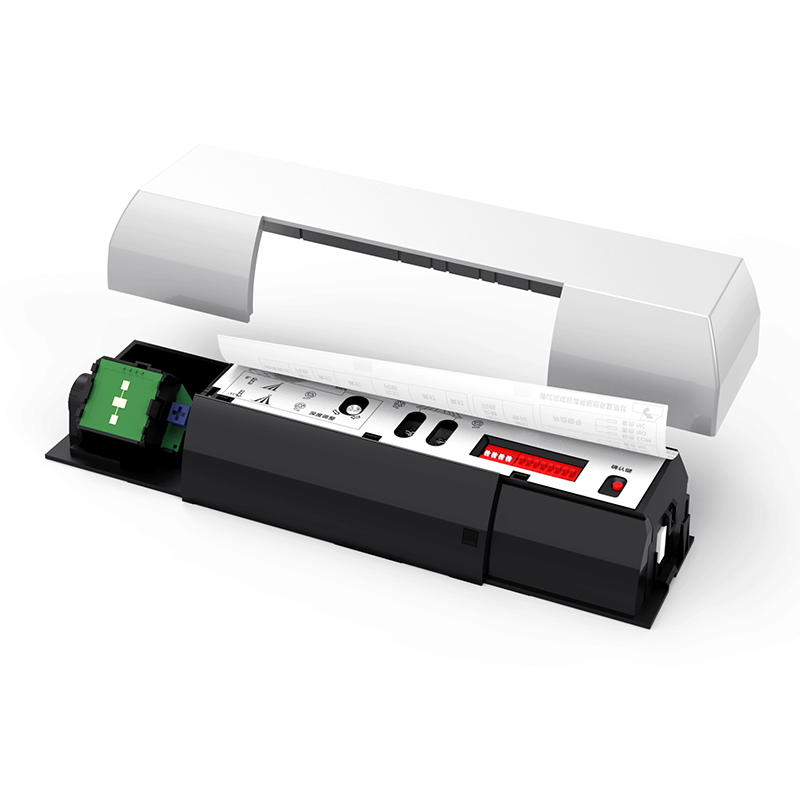How does the placement of a door motion sensor switch affect its effectiveness and performance?
The placement of a door motion sensor switch is a critical factor that influences its effectiveness and performance. Proper positioning ensures that the sensor accurately detects motion, avoids false triggers, and operates efficiently. Here’s an in-depth look at how placement affects these aspects and what considerations should be taken into account for optimal performance.

1. Coverage Area and Detection Range
The primary purpose of a door motion sensor switch is to detect movement within a specific area. The sensor’s effectiveness largely depends on its placement in relation to its detection range and coverage area. Most sensors have a specified range within which they can detect motion, typically measured in degrees for horizontal and vertical coverage. For instance, a sensor with a 180-degree horizontal range should be positioned to maximize its field of view, ensuring it covers all entry points and potential areas of movement.
Consideration: Place the sensor in a location where it has a clear line of sight and can cover the desired area without obstructions. Avoid placing it behind doors, furniture, or other objects that could block its detection field.
2. Height and Angle of Installation
The height and angle at which a motion sensor switch is installed can significantly impact its sensitivity and accuracy. Installing a sensor too high or too low can result in missed detections or false triggers. The optimal height for most motion sensors is between 6 to 8 feet above the ground, where it can effectively detect the movement of people rather than small pets or objects.
Consideration: Adjust the sensor’s angle to point slightly downward, which helps in capturing the motion of people walking towards or away from the door. Avoid angles that point directly at reflective surfaces like windows or mirrors, as they can cause false alarms.
3. Environmental Factors
Environmental conditions such as lighting, temperature, and airflow can affect the performance of a motion sensor switch. Sensors placed in areas with direct sunlight or near HVAC vents may experience false triggers due to sudden changes in temperature or moving air. Additionally, placing sensors in areas with frequent shadows or light fluctuations can lead to inconsistent performance.
Consideration: Install the sensor in a stable environment where it is shielded from direct sunlight, strong air currents, and rapid temperature changes. Indoor locations with consistent lighting and temperature conditions are ideal.
4. Type of Motion Sensor Technology
Different types of motion sensors, such as Passive Infrared (PIR), ultrasonic, microwave, and dual-technology sensors, have varying sensitivities and operational characteristics. PIR sensors, for instance, detect changes in infrared radiation and are sensitive to body heat, while ultrasonic sensors use sound waves to detect movement. Understanding the technology behind your motion sensor can help in choosing the best placement for optimal performance.
Consideration: For PIR sensors, avoid placing them near heat sources like radiators or large windows with direct sunlight. Ultrasonic and microwave sensors can be more versatile in placement but should still avoid areas with excessive noise or vibrations.
5. Minimizing False Alarms
False alarms can be a significant nuisance and undermine the reliability of a motion sensor switch. Placement plays a crucial role in minimizing false activations caused by non-human movements such as pets, insects, or oscillating objects like fans and curtains.
Consideration: Position the sensor away from areas where pets frequently roam or where there is considerable movement of non-human entities. Some sensors come with pet immunity features that can filter out movements from small animals, which should be considered during placement.
6. Integration with Other Systems
Motion sensor switches are often part of a broader security or automation system. Their placement should consider how they integrate with other components such as alarms, cameras, and lighting controls. Coordinated placement ensures that the entire system functions harmoniously, providing comprehensive coverage and seamless operation.
Consideration: Ensure that the sensor’s placement aligns with the overall layout of the security or automation system. This may involve positioning the sensor in locations that complement other devices, such as near entry points covered by surveillance cameras.
Conclusion
The placement of a door motion sensor switch is pivotal to its effectiveness and performance. By carefully considering factors such as coverage area, installation height and angle, environmental conditions, sensor technology, minimizing false alarms, and system integration, users can optimize the sensor's functionality. Proper placement ensures accurate motion detection, enhances security, reduces false triggers, and contributes to the efficient operation of the sensor within a broader system. Taking these considerations into account will lead to a more reliable and effective motion sensor switch installation, providing peace of mind and improved convenience.







